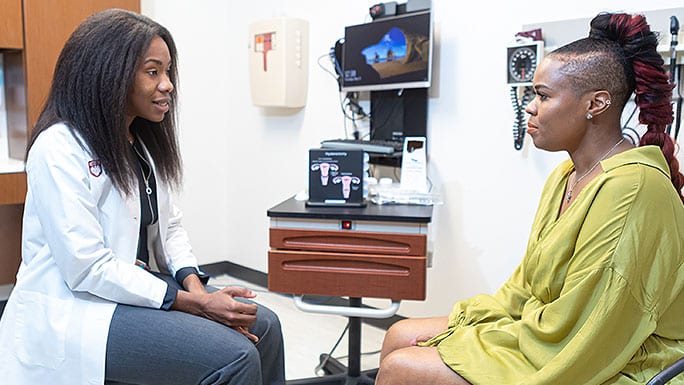Treatment Options for Uterine Fibroids
Over the next few weeks, we’re going to take a deeper look at all of the treatment options available for women with uterine fibroids.
We will look at what those options are and how they work. As well as discuss the advantages and disadvantages of each treatment.
Some of the treatment methods we will cover are:
Medications:
- Gonadotropin-releasing hormone (GnRH) agonists. These medications can be taken via a nasal spray or injection and they work by shrinking your fibroids.
- Birth control: Birth control can also be used to help with symptoms of fibroids — specifically heavy bleeding during and between periods and menstrual cramps.
- Progesterone-containing agents — pills, implants, injections, or an intrauterine device (IUD) — may also control bleeding.
Oral therapies:
- Elagolix is a new oral therapy indicated for the management of heavy uterine bleeding in premenopausal women with symptomatic uterine fibroids.
- Tranexamic acid is an antifibrinolytic oral drug that’s indicated for the treatment of cyclic heavy menstrual bleeding in women with uterine fibroids.
Non-Uterine Sparing Surgical Treatment:
- Hysterectomy- During this surgery, your uterus is removed. By removing your uterus completely, the fibroids can’t come back and your symptoms should go away.
Uterine-Sparing Surgery and Non-invasive outpatient procedures:
- Abdominal Myomectomy: Open abdominal surgery to resect symptomatic uterine fibroids
- Laparoscopic myomectomy: Laparoscopic removal of uterine fibroids
- Laparoscopic myolysis: Uses a laser probe to heat coagulate uterine fibroid
- Uterine Fibroid Embolization: Small particles are injected into the arteries supplying the uterus, cutting off blood flow to fibroids, causing them to shrink and die.
Ultimately your treatment plan will depend on a few factors, including:
- The number of fibroids you have.
- The size of your fibroids.
- Where your fibroids are located.
- What symptoms you are experiencing related to fibroids.
- Your desire for pregnancy.
- Your desire for uterine preservation.
Another deciding factor regarding the best treatment option for you will also depend on your future fertility goals. If you want to have children in the future, some treatment options are better than others. We will cover this in future articles as well.
In the meantime, talk to your healthcare provider about your thoughts, feelings, and concerns when discussing treatment options. And check back next week, as we dive deeper into the first of many treatment options, medication.


